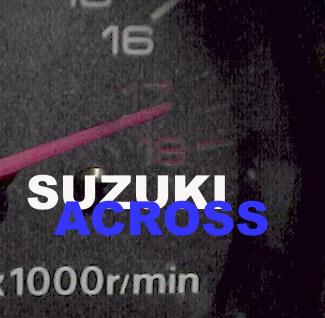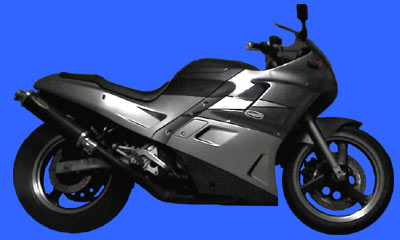|
Thread
|
Tyre Pressure
Ashman
--------------------------------------------------------------------------------
Shane what PSI do you run in your tyres? I have
never put a pump to mine and there is nothing on the bike to indicate what
they are, I think they may be due for a top up but don't want too little
or too much.
Shane
--------------------------------------------------------------------------------
Same deal here, I have never touched them either!
I also think mine could use a little extra.
BTW. Have you joined the e-mail list yet?? There
are quite a few guys on there now, it's great to speak with other Across
owners.
Jason
--------------------------------------------------------------------------------
The recomended tyre pressures for the Across
are as indicated in the manual. but I always go a bit higher
Tyre Size Rider Rider & Pillion
110/70/17 29psi 29psi
140/70/17 29psi 33psi
Garry
--------------------------------------------------------------------------------
Tyre pressures are a very high on the list of
maintainance for a motorcycle, and unfortunately for some is usually the
most neglected. If you have an Across the tyre chart is under the seat
if you don't have a manual. Remember the tyres are what hold us on the
road.
Garry
Delboy
--------------------------------------------------------------------------------
Get your own tyre gauge and keep it with you.
Tyre pressures stated are always cold tyre pressure.
(Less than 20km ride) Start with the recommended pressure using your own
gauge and then go for a ride to warm up the tyres. (20km ) and then use
your gauge again. If the temp has risen more than 3 psi the tyre is too
low. If it is the same or lower it is too hard. Eventually you will find
the right pressure (your gauge) to suit the tyres you have on the Across
that will keep the pressure to within 1-3 psi when riding. Remember the
recommended pressures are just a guide and not for different tyres. Don't
forget that if you have a pillion you will need to adjust the tyres for
the extra weight.
Ride Right, Ride Safe
Delboy
91 Across
Jason
--------------------------------------------------------------------------------
Couldn't agree more Delboy, I run my tyres at
36 front and 38 rear, The across seem to like these pressures, with the
suspension mod I have done to the front.
Jason |
Post below Copyright
© 1992-2001 by The Master Strategy Group, all rights reserved;
As we are now into the colder months of the year I thought it appropriate
to post a reminder about tire pressures and the
effect of temperature on same.
Stamped on the outside of many of your tires is a recommended tire pressure
range. (At least an upper limit.) For longest tire
life it is my recommendation that you strive to keep them at the higher
limit of those recommendations (regardless of what
your motorcycle owner's manual might say to the contrary.) Further,
this pressure should be determined while the tires are
cold - meaning, have not been used for a couple of hours.
Time and outside temperature effect the pressure within your tires.
It is NORMAL for a tire to lose about 1 pound per square
inch (psi) per month. Outside temperatures affect your tire pressure
far more profoundly, however. A tire's pressure can
change by 1 psi for every 10 degrees Fahrenheit of temperature change.
As temperature goes, so goes pressure.
For example, if a tire is found to have 38 psi on an 80-degree mid-summer
day, it could lose enough air to have an inflation
pressure of 26 psi on a 20-degree day six months later. This represents
a loss of 6 psi over six months and an additional
loss of 6 psi due to the 60 degree temperature reduction.
At 26 psi, your tire is severely under inflated and dangerous!
There is nothing wrong with your tire if it behaves like this, of course.
What is being illustrated here is that you MUST check
your tire pressure on a regular basis (about once a week is reasonable)
and to be particularly aware of it on cold days.
Another one from AMT;
PSI Factor
Steve's under pressure this month. But he can cope. Here's how you can
too...
Tyre pressures... Just what should you run?
Scrutineering at our cornering schools includes tyre pressures. The
reason is twofold. Firstly, you'd be amazed at what we've observed. The
record high was on a Honda CBR600 with 52psi in the front and an amazing
58psi in the rear. The record low was on a 916 Ducati with 13 and 15psi!
If we'd let either out it may have given the rider an interesting result.
Secondly, we know that most tyres are designed to run at a set cold pressure
for racetrack use. By setting the tyre to that cold pressure it will give
the best possible grip and handling for that day.
Each tyre is manufactured with several considerations; how it will be
used; to what type of bike it will be fitted; what loads and forces will
be placed upon it.
The manufacturer responds by setting the combination of construction,
profile, compound and tread pattern. For that tyre to work as it is designed,
it must be used in the correct tyre pressure range. So important is this
subject that Dunlop has issued a warning to riders; "it is strongly emphasised
that the incorrect mixing of tyres and incorrect inflation pressures can
result in undesirable and dangerous handling characteristics, particularly
on high performance motorcycles."
So - the most important thing to obtain from a tyre? Grip and traction,
the stability or handling of the tyre and the tyre-life. In short, you
need to follow the recommendations of the tyre and motorcycle manufacturers!
So what are the best track pressures?. Well, we set them at 30psi front
and rear. Hey... wait a minute... Didn't I just say to follow what the
manufacturers say? Well, I did, but they don't print what you would run
at a racetrack, unless of course you're running a race tyre. The lower
the tyre pressure the more the tyre deforms. The more the tyre deforms,
the more friction there is between the tyre and the road surface. The more
friction, the more heat. The more heat, the greater the opportunity the
tyre has to regenerate itself by shedding the 'used' layers of rubber (to
a point). This deformation of the tyre also creates a bigger contact patch
at the cost of a little stability.
This is desirable at a racetrack. You want grip. Tyres that are used
purely on the track wear the edges first because on a racetrack you generate
much more force on the edge of the tyre. You want the tyre to deform, heat
and literally 'shed' the used layers of rubber. On the road you have other
considerations. The stability or handling of the tyre is extremely important,
as you don't have the controlled conditions of a racetrack. There are other
road users and emergency situations that you just don't have on the track.
You spend more time with the bike upright on the road, no matter how 'sick'
a rider you are! This means that tyre deformation actually works against
you. Now it's deforming when the bike is upright. This means it's wearing
quicker in the centre and will 'square off'. This changes the profile and
the handling and grip of the tyre. The higher the pressure, the less it
will deform giving you the best possible tyre life and handling.
Tyres of 20 years ago aren't a patch on today. A tyre that is designed
to be run in a pressure range has a compound that will grip if set in that
range.
This means that not only would you run a higher pressure on the road,
if you are carrying bigger loads than normal, you would probably increase
the pressure.
If you can keep the tyre in the shape it is meant to be in, then it
will give you grip, handling and life.
Good luck with your riding.
|

 Made
in Sydney, Australia
Made
in Sydney, Australia


